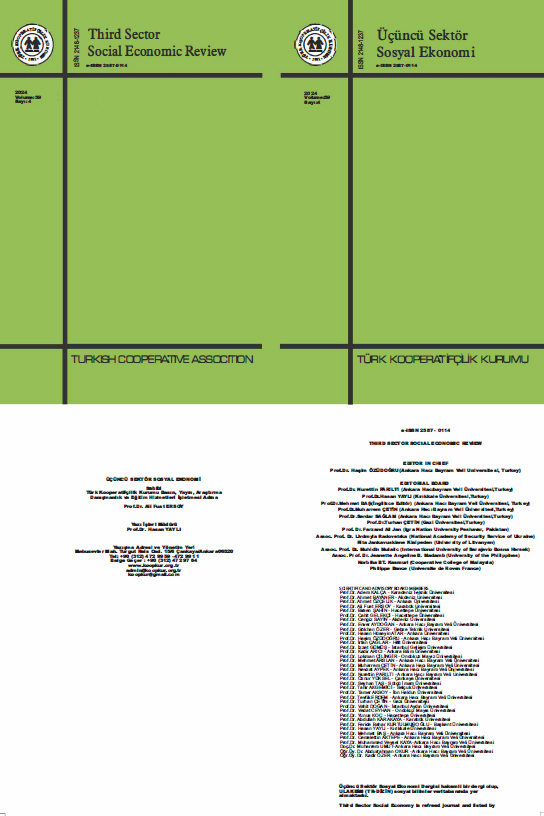EMPLOYMENT AND ECONOMIC GROWTH RELATIONSHIP IN TURKEY: THE CASE OF LEVEL-2 REGIONS
Keywords:
Economic Growth, Employment, Regional Developments, Level-2 Region, Panel ARDL, Panel CausalityAbstract
Employment and economic growth are two important macroeconomic variables that shape policies in a country's economy. In the economic literature, there is an important relationship between economic growth, which refers to the increase in the amount of goods and services produced per capita or in total, and employment, which refers to the use of labour force in production. Accordingly, this study analyses the relationship between employment and economic growth at the regional level. The aim of the study is to examine the relationship between employment and economic growth in Level 2 regions in Turkey for the period 2004-2022 by using panel Autoregressive Distributed Lag (ARDL) and Emirmahmutoğlu & Köse causality analysis. The findings of the study reveal that in the long run, employment increases economic growth in all 26 regions within the scope of Level 2.On the other hand, in the short run, it is found that employment increases economic growth only in 7 regions (TR10, TR21, TR31, TR41, TR42, TR51, TR61) within the scope of Level 2.It is noteworthy that these regions are more developed and industrialised regions compared to other regions. The findings obtained from causality analysis reveal that there is a bidirectional causality relationship between employment and economic growth in Level 2 regions.Based on the findings, there is a significant relationship between employment and economic growth.Therefore, in order to reduce regional differences in the distribution of economic activities within the country and to ensure equality of opportunity, it is important to increase employment opportunities in less-developed regions and to implement policies to promote regional development.









